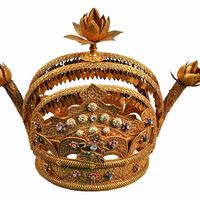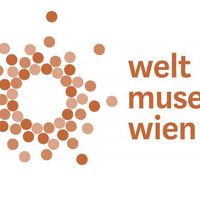The Netherlands: "The new National Museum of Worldcultures brings opportunities and energy"
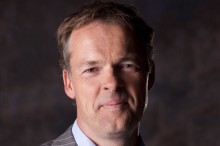 Since 1 April 2014, the Netherlands has a new museum for ethnographic and world culture collections: The National Museum of Worldcultures. But is there need for another one, you might ask, considering the fact that this country already has quite a number of such museums? We ask the General Director, Stijn Schoonderwoerd.
“Well, it is not a really new museum, this National Museum of Worldcultures”, he says. “Because actually, it is the merger of three separate ones: the Tropenmuseum in Amsterdam, the National Museum of Ethnology in Leiden and the Afrika Museum in Nijmegen. These three museums have decided to combine their forces in favor of the formation of a new organization. And it is this formation that is calle
Since 1 April 2014, the Netherlands has a new museum for ethnographic and world culture collections: The National Museum of Worldcultures. But is there need for another one, you might ask, considering the fact that this country already has quite a number of such museums? We ask the General Director, Stijn Schoonderwoerd.
“Well, it is not a really new museum, this National Museum of Worldcultures”, he says. “Because actually, it is the merger of three separate ones: the Tropenmuseum in Amsterdam, the National Museum of Ethnology in Leiden and the Afrika Museum in Nijmegen. These three museums have decided to combine their forces in favor of the formation of a new organization. And it is this formation that is calle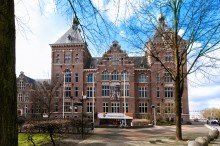 d the National Museum of Worldcultures”.
This new organization is not a museum in the sense of being a building or a physical place to see exhibitions. “For that, the three venues in Amsterdam, Leiden and Nijmegen, remain in business. Also, the three original names will still be used towards the public. It is these names that they know, brands that have a history that goes a long way back. So it is logical to keep using them in all our communication and marketing. But behind the separate names and websites, a fully integrated organization runs the three venues based one single mission and vision”, Schoonderwoerd says.
That sounds efficient. But was cost efficiency the only reason to make three successful organizations give up their autonomy? Schoonderwoerd: “To be honest, the merger probably would not have happened if the Tropenmuseum had not been threatened with closure. That was an incredible situation. The Ministry of Foreign Affairs, who had been subsidizing the Tropenmuseum for decades, had announced that it was no longer willing to support a museum. And the Ministry of Culture was not willing to take it under its wings, like it subsidizes the other museums. Only after we announced our plan to merge, a political solution was found and the Tropenmuseum could be saved. Otherwise
d the National Museum of Worldcultures”.
This new organization is not a museum in the sense of being a building or a physical place to see exhibitions. “For that, the three venues in Amsterdam, Leiden and Nijmegen, remain in business. Also, the three original names will still be used towards the public. It is these names that they know, brands that have a history that goes a long way back. So it is logical to keep using them in all our communication and marketing. But behind the separate names and websites, a fully integrated organization runs the three venues based one single mission and vision”, Schoonderwoerd says.
That sounds efficient. But was cost efficiency the only reason to make three successful organizations give up their autonomy? Schoonderwoerd: “To be honest, the merger probably would not have happened if the Tropenmuseum had not been threatened with closure. That was an incredible situation. The Ministry of Foreign Affairs, who had been subsidizing the Tropenmuseum for decades, had announced that it was no longer willing to support a museum. And the Ministry of Culture was not willing to take it under its wings, like it subsidizes the other museums. Only after we announced our plan to merge, a political solution was found and the Tropenmuseum could be saved. Otherwise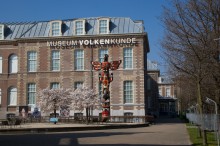 , these would have been the last months of its existence.”
“The merger brings new opportunities and energy”, Schoonderwoerd observes. “In Afrika Museum, we can now invest more in programming and marketing than they were able before the merger. For Tropenmuseum, we are preparing a major renovation of the visitors’ facilities, which is long overdue. In Leiden, we establish the Research Center for Material Culture, where the researchers and curators of the former museums work together now in one team on the state collection that is formed out of the previously separate collections. This “new” collection of over 400,000 objects and one million photographs is in numerous areas among the best in the world, like our Japanese and Indonesian collections. Also, the new museum organization ranks among the top five of the state financed museums in The Netherlands terms of visitor numbers and educational outreach. This is a position that ethnographic museums have never had in our museum landscape. And so on”.
But it is surely not all wonderful and great, isn’t it? “Indeed, the integration of three separate organizations into one is never easy. And we have less money than we used to have. You know, after the merger, we really need to prove ourselves. Especially since our state funding is only guaranteed till December 2016. After that, we have to apply again and everything is possible –good things but also bad. So yes, we do have challenges and still need to solve one or two problems. But that’s also a source of energy and creativity. And if I look at our team now, I know that we are ready to take on the future”, Schoonderwoerd says.
, these would have been the last months of its existence.”
“The merger brings new opportunities and energy”, Schoonderwoerd observes. “In Afrika Museum, we can now invest more in programming and marketing than they were able before the merger. For Tropenmuseum, we are preparing a major renovation of the visitors’ facilities, which is long overdue. In Leiden, we establish the Research Center for Material Culture, where the researchers and curators of the former museums work together now in one team on the state collection that is formed out of the previously separate collections. This “new” collection of over 400,000 objects and one million photographs is in numerous areas among the best in the world, like our Japanese and Indonesian collections. Also, the new museum organization ranks among the top five of the state financed museums in The Netherlands terms of visitor numbers and educational outreach. This is a position that ethnographic museums have never had in our museum landscape. And so on”.
But it is surely not all wonderful and great, isn’t it? “Indeed, the integration of three separate organizations into one is never easy. And we have less money than we used to have. You know, after the merger, we really need to prove ourselves. Especially since our state funding is only guaranteed till December 2016. After that, we have to apply again and everything is possible –good things but also bad. So yes, we do have challenges and still need to solve one or two problems. But that’s also a source of energy and creativity. And if I look at our team now, I know that we are ready to take on the future”, Schoonderwoerd says.
Pictured: The Tropenmuseum, Amsterdam, and the National Museum of Ethnology, Leiden, are both ASEMUS members
Similar content
posted on
30 Nov 2011
posted on
29 Nov 2011
posted on
26 Feb 2012

